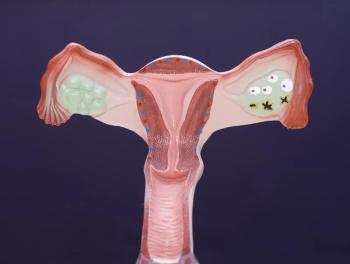
HIPEC Increases Survival in Advanced Ovarian Cancer Over Surgery Alone
Treatment with hyperthermic intraperitoneal chemotherapy along with cytoreductive surgery resulted in better survival outcomes than surgery alone in patients with stage III epithelial ovarian cancer, according to a new study.
Treatment with hyperthermic intraperitoneal chemotherapy (HIPEC) along with cytoreductive surgery resulted in better survival outcomes than surgery alone in patients with stage III epithelial ovarian cancer, according to a new study.
“Intraperitoneal delivery of chemotherapy enhances drug delivery at the peritoneal surface and may improve outcomes by eliminating residual microscopic peritoneal disease more efficiently than intravenous administration of chemotherapy,” wrote study authors led by Willemien J. van Driel, MD, PhD, of the Netherlands Cancer Institute in Amsterdam. “Hyperthermia increases the penetration of chemotherapy at the peritoneal surface and increases the sensitivity of the cancer to chemotherapy by impairing DNA repair.” It also can induce apoptosis, inhibit angiogenesis, and has a cytotoxic effect via the denaturation of proteins.
The new study was a randomized, open-label, phase III trial of cytoreductive surgery with or without HIPEC. It included 245 patients in the Netherlands and Belgium with stage III ovarian, fallopian tube, or peritoneal cancer, all of whom had at least stable disease following 3 cycles of neoadjuvant chemotherapy with carboplatin and paclitaxel. The median follow-up period was 4.7 years, and the results were
In total, 110 of 123 surgery alone patients (89%) had an event of disease recurrence or death, compared with 99 of 122 HIPEC patients (81%); this yielded a hazard ratio (HR) of 0.66 (95% CI, 0.50–0.87; P = .003). The median recurrence-free survival was 14.2 months with HIPEC and 10.7 months without it, and the probability of recurrence-free survival at 3 years was 8% with surgery alone and 17% with HIPEC.
Overall survival (OS) was also improved with HIPEC. In the surgery alone group, 62% of patients died during follow-up, compared with 50% in the HIPEC group, for an HR of 0.67 (95% CI, 0.48–0.94; P = .02). Median OS was 33.9 months with only surgery and 45.7 months with the addition of HIPEC, and the probability of OS at 3 years was 48% with surgery alone and 62% with HIPEC.
Almost all patients in both groups had at least one adverse event between randomization and 6 weeks after the last cycle of chemotherapy, and there were no significant differences between the groups in the incidence of adverse events. Events of grade 3 or 4 were reported in 25% of the surgery alone group and in 27% of the HIPEC group (P = .76). The most common grade 3/4 adverse events in both groups included abdominal pain, infection, and ileus. There was no significant difference with regard to health-related quality-of-life outcomes.
“Our results indicate that among women with advanced ovarian cancer, HIPEC plus complete or optimal interval cytoreductive surgery resulted in longer survival than cytoreductive surgery alone,” the authors concluded.
Newsletter
Stay up to date on recent advances in the multidisciplinary approach to cancer.





















































































